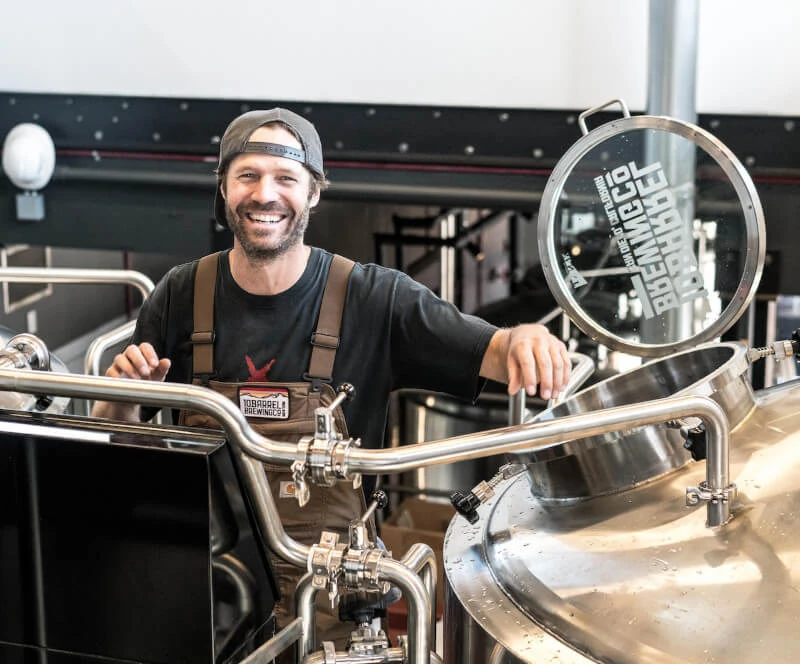Climate: The Natural Regulator
The climate where whisky is matured can greatly influence its character. Temperature and humidity can accelerate or decelerate the aging process. In hotter regions like Kentucky or Taiwan, whisky matures faster due to higher average temperatures, leading to a more significant interaction between the spirit and the wood. In contrast, the relatively cooler climates of Scotland or Ireland might result in a slower, more drawn-out maturation.
Implication: Whiskies matured in warmer climates often exhibit deeper wood-derived characteristics like caramel or tannin, while those from cooler areas might retain more of the distillate’s original characteristics.
Air Quality and Composition: Coastal vs. Inland
The air that wafts over a maturing cask can leave its imprint on the final product. Coastal distilleries, with their marine air, can produce whiskies with a noticeable salinity or brininess. Islay whiskies from Scotland, for instance, often have a distinctly maritime character. On the other hand, inland distilleries, away from the sea, can offer profiles that are devoid of these salty traits.
Location plays a pivotal role in defining certain aromatic and flavor profiles, like the peaty and briny notes that aficionados associate with specific regions.
Barrel Storage: Above or Underground?
Beyond geographic location, the choice of warehouse design—whether it’s above-ground or dunnage (low-built, traditional)—affects the whisky’s maturation. Above-ground warehouses experience more significant temperature fluctuations, leading to enhanced spirit-wood interaction. Dunnage warehouses, being closer to the ground, maintain a more consistent temperature and humidity level.
The choice between dunnage and more modern racking can determine the consistency of maturation across different barrels and influence the whisky’s overall character.
Does Elevation Matter?
Distilleries at higher altitudes expose their whiskies to lower air pressure and, often, cooler temperatures. These factors can influence the rate of evaporation from the cask, with more alcohol than water potentially evaporating, leading to what’s known as “angel’s share.” This can result in a richer and more concentrated spirit over time.
Implication: High-altitude distilleries might produce whiskies with a unique depth, derived from the specific evaporation dynamics at such elevations.
Water Sources
Water plays a crucial role in both distillation and maturation. The mineral content of the water used can impart distinct characteristics to the whisky. Some distilleries in Scotland tout their water source as a primary differentiator, with either spring, river, or rainwater.
The minerals and the pH level of the water can influence the final taste and texture of the whisky, making the water source an integral part of the whisky’s identity.
Proximity to Other Distilleries
Areas dense with distilleries, like Speyside in Scotland, might see a sharing of microscopic elements, like specific wild yeasts or bacteria. Over time, these can contribute subtle commonalities to whiskies from the same region.
Implication: Dense distillery regions might have whiskies with underlying common notes, derived from shared environmental elements.
Is Location Just a Romantic Notion?

Let’s flip the coin and question if with today’s technological advancements, is the effect of the environment within the whiskey maturation stage, as pivotal as we’ve been led to believe.
The Science of Controlled Maturation
- Replicating Conditions Anywhere
“I’ve always believed that if you can control the environment, you can recreate any whisky profile,” says Richard Paterson, Master Blender for Whyte & Mackay. Modern distilleries employ controlled rooms that simulate varied global maturation conditions, from the coastal airs of Islay to the humid summers of Kentucky. If atmospheric conditions are the cornerstone, these advancements suggest the whisky world is no longer bound by geography.
- Uniformity Over Uniqueness
Master Distiller at GlenSomething, Sarah McTavish, once commented, “While there’s a charm in the uniqueness that location brings, there’s also unpredictability. Controlled maturation ensures consistency batch after batch.” This idea challenges the traditional attraction of location-specific characteristics, hinting that in the modern age, uniformity might hold more value than rarity.
Shared Elements Across Distilleries
- Commonalities Over Differences
Regions dense with distilleries, like Speyside, share certain environmental elements, possibly contributing similar traits to whiskies. But as Joe Allan of SpeyRiver Distillery notes, “While we share the air with ten other distilleries, our whiskies are distinct. It’s more about the process than the place.” His statement accentuates that while location adds nuances, it might not be the dominant factor in the flavor profile.
Is The Water Source an Overrated Basic?
- Modern Filtration and Treatment
Bill Yenne, in his book ‘Whiskey: The Definitive World Guide,’ discussed the romanticism attached to water sources in whisky production. However, with today’s advanced water treatment facilities, any impurities or unique mineral traits from water sources can be filtered or added, suggesting that the water’s origin might not be as crucial as once believed.
Distillation and Ingredients
- The Base Matters
Tom Nichol, a renowned distiller, once remarked, “Give me the same grain, yeast, and process, and I’ll give you a similar spirit, no matter where I am.” This perspective underscores the idea that ingredients and distillation, more than location, lay the foundation for a whisky’s character.
The Influence of the Barrel
- Wood Over Weather
It’s often said in the whisky world: “70% of the flavor comes from the barrel.” If this adage holds, then the wood type, its previous use, char level, and the duration of maturation could overshadow the location’s importance. As Jimmy Russell, the Master Distiller of Wild Turkey, aptly puts it, “It’s not about where the barrel sits; it’s about what the barrel imparts.”
The Impact of Modern Techniques

With advancements in technology and understanding, some distilleries now replicate environmental conditions without moving their barrels. The controlled temperature and humidity rooms, for instance, can simulate different global maturation conditions.
1. Environmental Control Chambers
Ever thought of simulating Scotland’s damp air in sunny California? With environmental control chambers, you can. Distilleries are harnessing these spaces to fine-tune temperature, humidity, and even air quality. Essentially, these are advanced versions of climate-controlled rooms. Think of it like adjusting your home thermostat but on a larger scale, specifically engineered for whisky.
Westland Distillery in Seattle uses controlled environments to mimic different climates, ensuring their whiskey matures just as they intend.
2. Rapid Aging Techniques
What if you could enjoy a decade’s worth of aging in mere months? Sounds like magic, right? By using ultrasound or specialized agitation techniques, some distilleries speed up the maturation process. The idea is simple: increase the spirit’s interaction with the wood, and you enhance the aging process. The Cleveland Whiskey Company employs pressure variations to push the spirit in and out of the barrel wood, achieving faster maturation.
3. Wood Management
If you’re keen on influencing your whiskey profile, then you’d understand why some distilleries are obsessed with wood. They’re not just picking oak barrels; they’re selecting specific oak species, controlling char levels, and even seasoning the wood to influence maturation. Brown-Forman, the parent company of Jack Daniel’s, controls its wood sourcing and barrel-making. By doing so, they can customize the wood’s influence on their spirit to a T.
4. Elemental Infusion Techniques
Wish your whiskey had a hint of sea breeze or mountain air? While traditionally you’d need to mature by the coast or up in the hills, modern techniques allow for direct elemental infusions. Distilleries can introduce specific environmental elements into controlled maturation spaces.
At Lost Spirits Distillery in Los Angeles, they utilize a patented reactor to introduce specific elements, ensuring their whiskey absorbs the desired characteristics.
5. Advanced Monitoring Systems
Knowledge is power. When you can monitor every tiny change in your maturing whiskey, you’re in a position to make informed adjustments. Distilleries now use advanced sensors inside barrels to track temperature, pressure, and even chemical changes in real time.
Brands like Buffalo Trace use advanced monitoring to understand their spirit’s evolution, ensuring quality and consistency.

